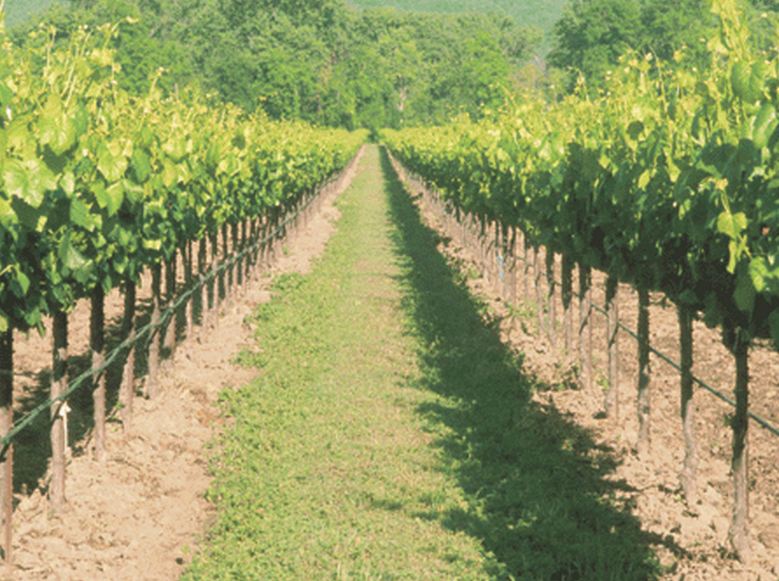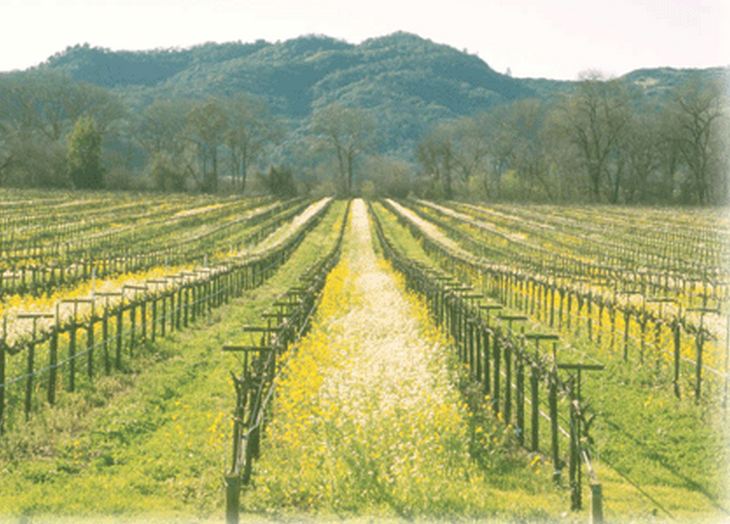Cover Cropping Systems for Organically Farmed Vineyards (LODI Wine Growers)

Vineyard cover cropping practices have been refined in Mendocino and Lake counties over the past 15 years. When organic and sustainable winegrowing began in the late 1980s, many of the cover crop species were selected from agronomic crop farming systems. While these were well-suited for bringing “life” back into the soil, they weren’t ideal species for a vineyard. Many were simply too energy-intensive to farm; too vigorous, grew into the trellis, produced too much biomass to manage easily, or produced too much nitrogen in the soil.
Following multiple trials conducted by the author and cooperating growers, we have identified a broad “plant palette” from which to choose in addressing specific cultural issues in vineyards, such as protection from soil erosion while building soil structure, organic matter, and overall soil quality.
Cover crops are now recommended that better fit the architecture of a vineyard and the farming system that growers find appropriate for their vineyards.
In Mendocino and Lake counties, both conventional, sustainable, and certified organic farming systems use cover crops. The differences between cover crop farming practices in these systems are slight.
Organic winegrowers do not use any herbicides or synthetically processed concentrated fertilizers. They rely on compost for nutrients. (Compost also makes a significant contribution to the goal of building soil carbon, as it contains fairly stable humus-like compounds.)
Under-vine weed control is done mostly with tillage tools. Both winegrowing systems use many of the same cover crop species, managed in similar ways.
This report will examine how organic wine growers select cover cropping systems, and what techniques are used to grow and manage them in North Coast vineyards.

Importance of Cover Crops
Cover crops are a tool to help winegrowers manage their soils in multiple ways. They help to:
Protect soil from erosion
The foliage of cover crops reduces the velocity of raindrops before they hit the soil surface, preventing soil from splashing. This prevents slaking of soil aggregates and sealing of the soil surface. (When this occurs, runoff increases, along with soil erosion). The roots of the cover crops bind soil particles together, improving soil structure and water penetration, while preventing the soil particles from moving.
Regulate vine growth
Cover crops can be used to both invigorate vines (augmenting soil nitrogen from nitrogen-fixing legumes) and devigorate vines (root competition from non-legumes with the vines for nutrients and water).
Improve soil fertility
Besides increasing soil nitrogen, decomposed cover crops increase the soil cation exchange capacity. Therefore, the ability of a soil to hold and exchange nutrients increases. Additionally, nutrients are often chelated into organic complexes, and are more readily exchanged from these substrates than from inorganic clay minerals. Since many organic growers also apply compost, this also adds to the fertility of vineyard soils.

